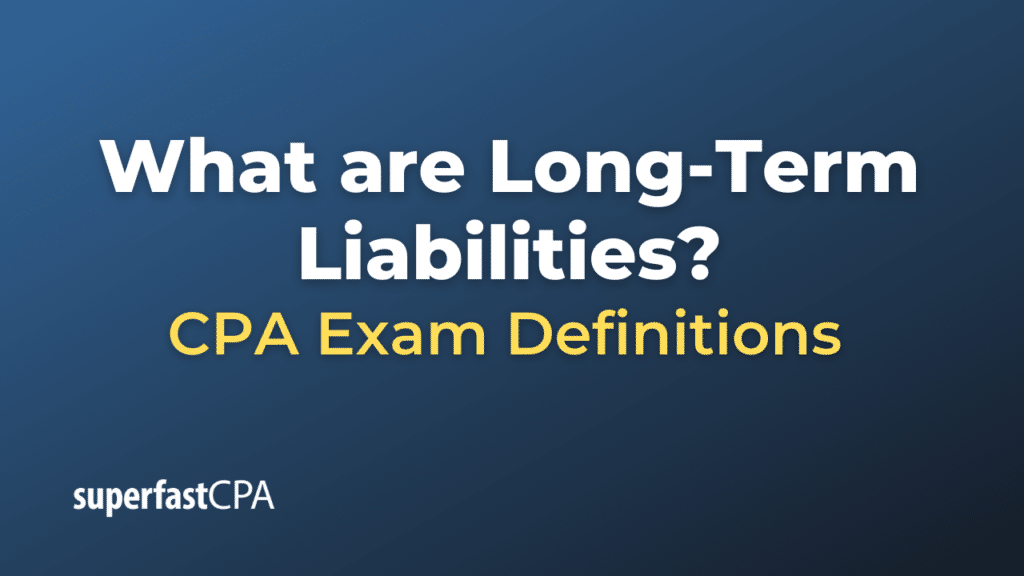Long-Term Liabilities
Long-term liabilities, also known as non-current liabilities, are financial obligations a company owes that are not due within one year from the balance sheet date. These obligations are a crucial part of a company’s operations, as they are often tied to the company’s long-term financing and investment activities.
Examples of long-term liabilities include:
- Long-Term Debt: This is debt that is not due within the next year. It could include loans from banks or bonds issued to investors, where the repayment schedule extends beyond a year.
- Deferred Tax Liabilities: These are taxes that a company owes but does not have to pay until a future date.
- Pension Liabilities or Post-Employment Benefits: These are obligations a company has to its employees for pension payments or other post-employment benefits, which will be paid in the future.
- Lease Liabilities: These are obligations arising from lease contracts that are due beyond the next twelve months.
- Long-Term Provisions: These include obligations that are of uncertain timing or amount. An example could be the estimated cost for a product warranty where the company predicts it will need to make repairs or replacements over a period longer than one year.
These long-term liabilities are recorded on a company’s balance sheet. They are important to both the company and potential investors as they represent future outflows of resources, and their management is critical for the company’s long-term financial health. Analysts and investors often examine long-term liabilities to assess a company’s leverage, risk, and financial structure.
Example of Long-Term Liabilities
Let’s use a hypothetical example of a manufacturing company, “ManuCorp,” to illustrate long-term liabilities.
Suppose ManuCorp has the following long-term liabilities:
- Long-Term Debt: ManuCorp borrowed $10 million from a bank to build a new factory. This loan is due to be repaid over 10 years. The outstanding amount of this loan that’s due after one year would be recorded as a long-term liability.
- Deferred Tax Liabilities: ManuCorp made a substantial profit this year due to a surge in demand for its products. However, because of certain tax deductions and credits, the company won’t need to pay all of the associated income tax until future years. This creates a deferred tax liability.
- Pension Liabilities: ManuCorp has a pension plan for its employees. The company estimates that it will need to pay out $5 million in pension benefits over the next 20 years. This estimated obligation is recorded as a long-term liability.
- Lease Liabilities: ManuCorp leases several pieces of manufacturing equipment under long-term lease agreements. The present value of the future lease payments, beyond the next 12 months, constitutes a long-term liability.
- Long-Term Provisions: ManuCorp provides warranties on its products. Based on past experience, the company estimates that it will spend $500,000 over the next three years to repair or replace defective products. This estimated future expense is recorded as a long-term provision.
All of these obligations would be summed up and reported as long-term liabilities on ManuCorp’s balance sheet. They represent future outflows of cash that the company will need to manage as part of its long-term financial strategy. By assessing these liabilities, investors can gain insights into ManuCorp’s financial health and future cash needs.













